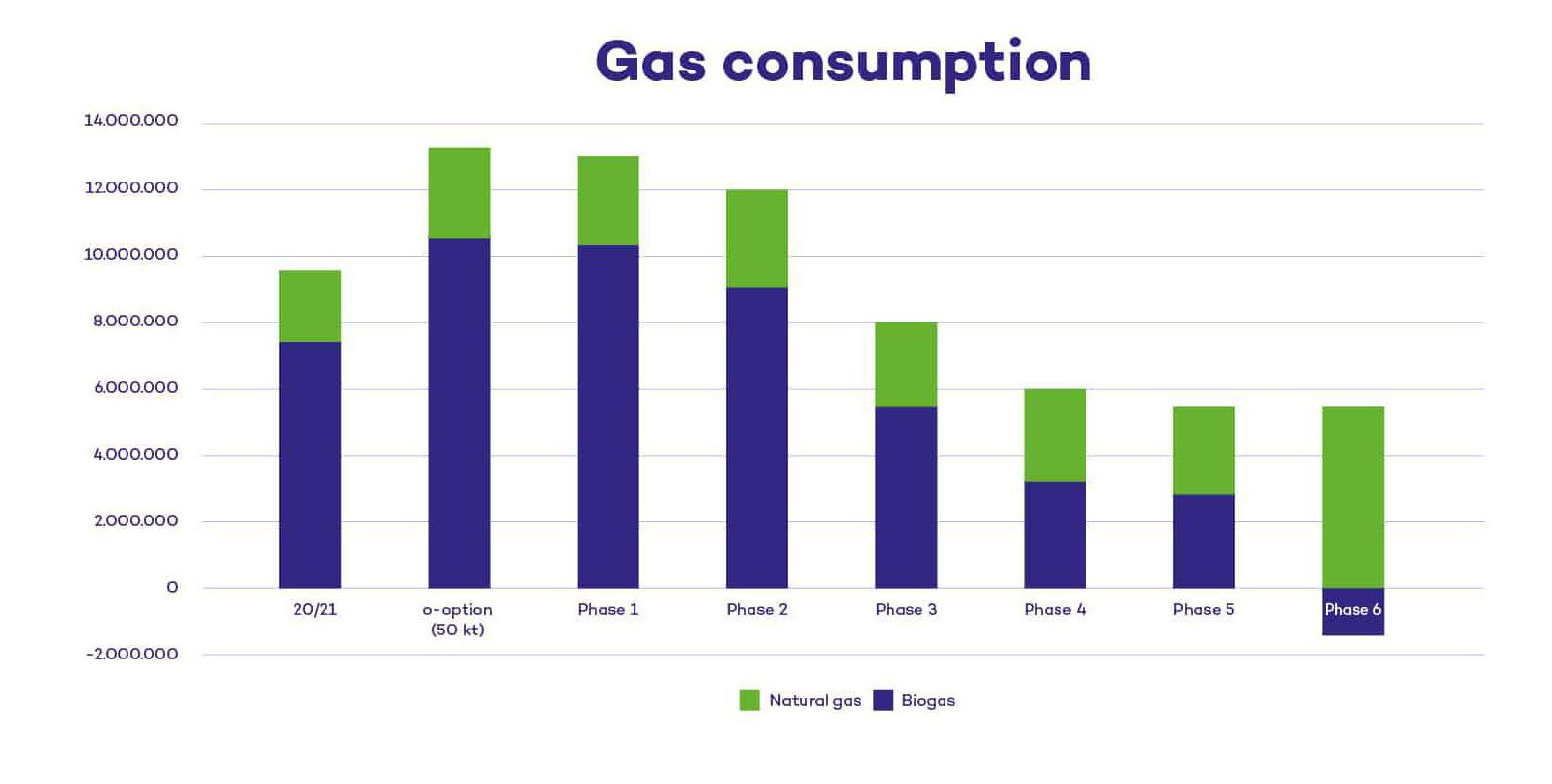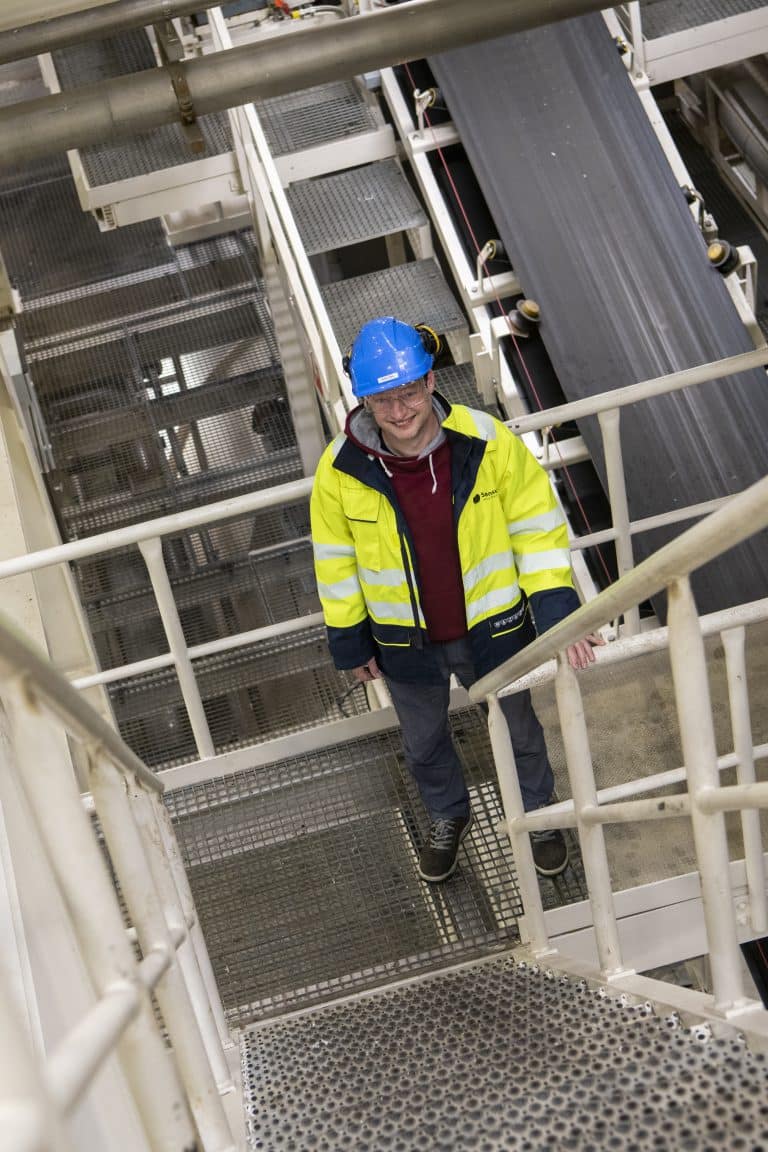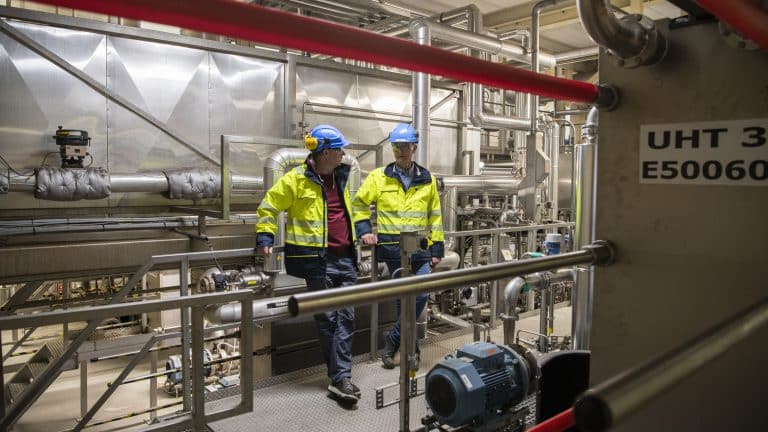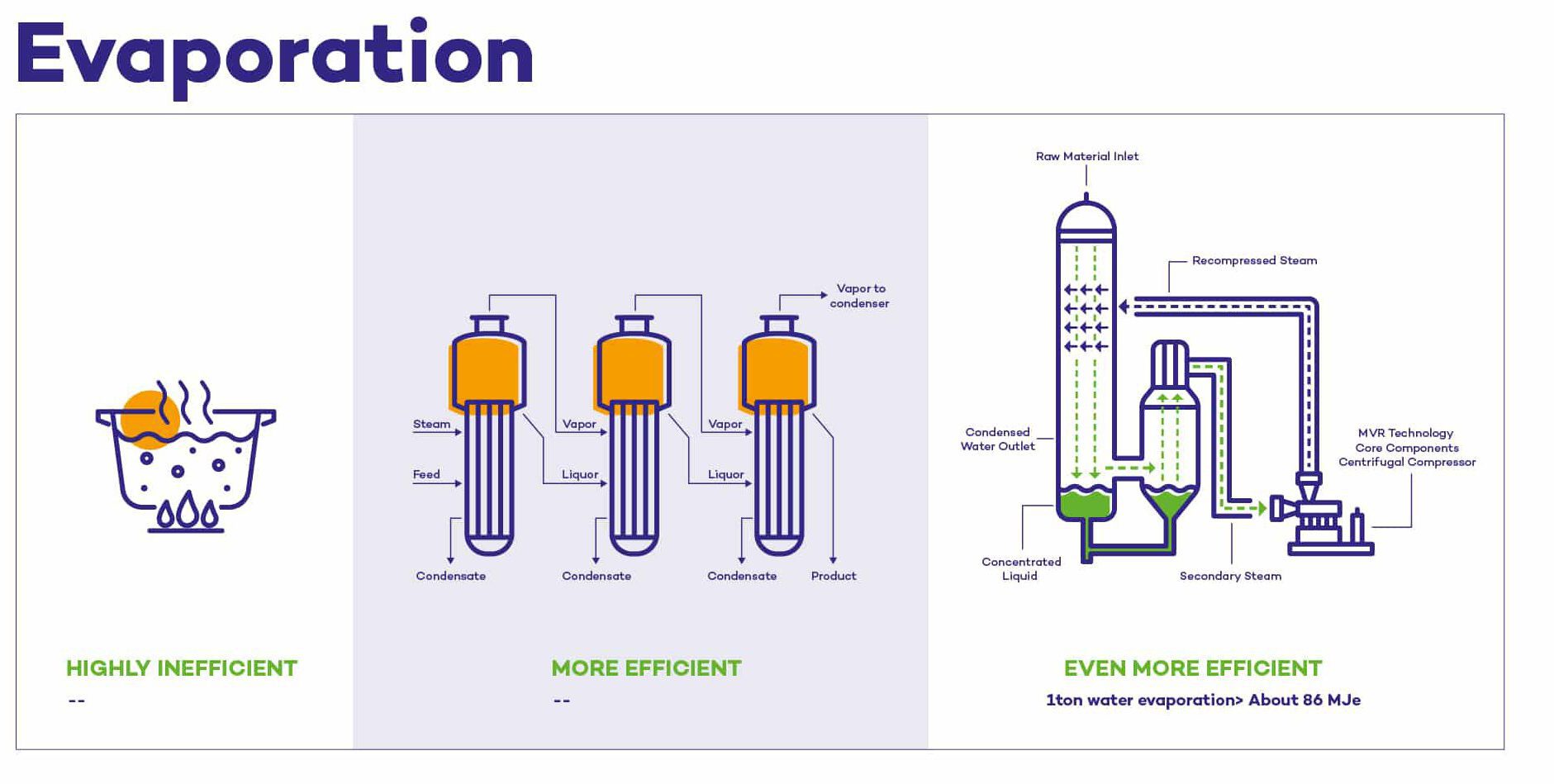Sensus extracts inulin from chicory root. To preserve the product, part of the harvest is evaporated as a semi-finished product into a thick and clear juice (TCJ). Evaporation is an energy-intensive process, which results in greenhouse gas emissions.
Saving where we can
Greenhouse gas emissions from a factory are viewed at three different levels, known as scopes.
- Scope 1: Emissions from own chimney
- Scope 2: Emissions from power consumption
- Scope 3: Emissons from use of excipients
For 2030, Sensus is focusing on Scope 1. “Our priority is to first save energy where we possible and to then use a renewable energy source. For example, with electrification (adapting processes that currently use gas into electric processes), and by utilising and generating green electricity and biogas,” Henk explains. “Scope 3, the greening of excipients, involves a lot more work and often requires converting the entire process. We’re working on that too, but that’s more of a long-term project towards 2050.”
Energy Master Plan
To tackle energy consumption in Roosendaal, the Energy Workgroup within Sensus created a model of the plant’s energy management. Henk: “This model formed the basis of the Energy Master Plan that we prepared for Roosendaal. The plan has six phases that will allow us to more than halve the plant’s gas demand by 2030, and completely green it by 2050.” “We completed the first phase already in 2022,” Koen adds. “Thanks to additional heat exchangers, we’ve ensured that we can use the heat in the plant more efficiently. Phase two is now underway and includes something similar, but with vapour flows. Phase 3 – the biggest step in reducing gas consumption – is now being prepared,”.
Evaporating thick juice
In Phase 3 of the Energy Master Plan, the evaporation process of the TCJ line will be made more sustainable through Mechanical Vapour Recompression (MVR). The evaporation process on the TCJ line uses steam to evaporate water from the chicory juice under high temperature. Koen: “The residual vapour that is created is reused in the current process, but you still use a relatively large amount of fresh steam. Thanks to MVR, you increase the pressure and the temperature of the residual vapour, so you can use it again as steam. The current steam process runs on gas. MVR is all-electric and a lot more efficient. In fact, MVR on the TCJ line can save up to 90% on energy consumption. This return makes it one of the most interesting projects we can do.”
Attention to saving
This new technology on the TCJ line could save 3.9 million cubic meters of gas per year in Roosendaal. “That’s equivalent to the consumption of about 3,000 households,” Henk points out. “And with the current cost of energy, a project like this becomes even more interesting. Now that we are so involved with this, we’re seeing an increasing focus on energy saving across the company.” Koen: “It’s also a really worthwhile project in the context of the global climate.”
The route to 2030
For Henk and Koen, the next few years are all about further increasing sustainability at the Roosendaal plant. Henk: “As things stand, it looks like we’re going to meet our 2030 target. Phase 3 is being followed by two more, somewhat smaller, efficiency steps. In the final phase, we’ll meet our remaining gas demand with biogas. We currently already extract biogas from our water treatment process. We’ll soon supplement this with gas from fermenting chicory pulp. This is how we can make our gas consumption 100% sustainable.”

Reduction in gas consumption at the Roosendaal plant per step within the Energy Master Plan. Green is green gas; blue is natural gas.



